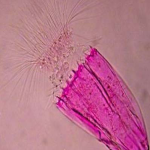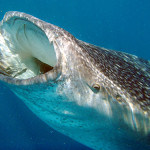Here’s a wonderful clip of Nancy Knowlton discussing her coral research in the tropics. Nancy is one of the world’s premier marine biologist with an accomplished scientific career. Courtesy of Scripps Oceanography, UC San Diego, “Endangered Oceans” Explorations DVD, Volume 10 No. 3
4 Replies to “TGIF: Assessing Coral Populations”
Comments are closed.






Woo! Nice science! When the narrator said all the stuff they measure I asked myself “how the heck do they measure stuff like that?” then it was described… I like the way they measure the distance the bundles travel using buoyant light sticks, it’s like an extremely silent underwater rave party.
How do you measure the error and uncertainty in this kind of measurements? It looks like a light stick can travel less distance than those sperm and eggs bundles because of its shape, it’ll have greater resistance to the currents. Or maybe it’s the other way around?
Thank you.
The light stick won’t travel any faster than the eggs or sperm bundles. Because it is not actively be propelled, it will travel at the same speed as anything else that is floating in water, even coconuts!
But! but… well, I guess it’s like the rock and feather experiment on top of The Tower of Pizza… is it?
Not exactly, the light stick, coconuts and other flotsam don’t sink. Rocks would sink while the feather floats. The density of the former objects is less than that of water so its floats. In some not-so-obvious objects, i.e. the coconut, the object has enough gases or airspace in it that it counters the effect of its own density and stays afloat.